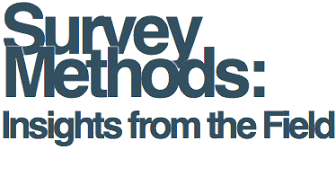New open access publication in Survey Methods: Insights from the Field

Auxiliary data are becoming more important as nonresponse rates increase and new fieldwork monitoring and respondent targeting strategies develop. In many cases, auxiliary data are collected or linked to the gross sample to predict survey response. If the auxiliary data have high predictive power, the response models can meaningfully inform survey operations as well as post-survey adjustment procedures. In this paper, I examine the utility of different sources of auxiliary data (sampling frame data, interviewer observations, and micro-geographic area data) for modeling survey response in a probability-based online panel in Germany. I find that the utility of each of these data sources is challenged by a number of concerns (scarcity, missing data, transparency issues, and high levels of aggregation) and that none of the auxiliary data are associated with survey response to any substantial degree.
